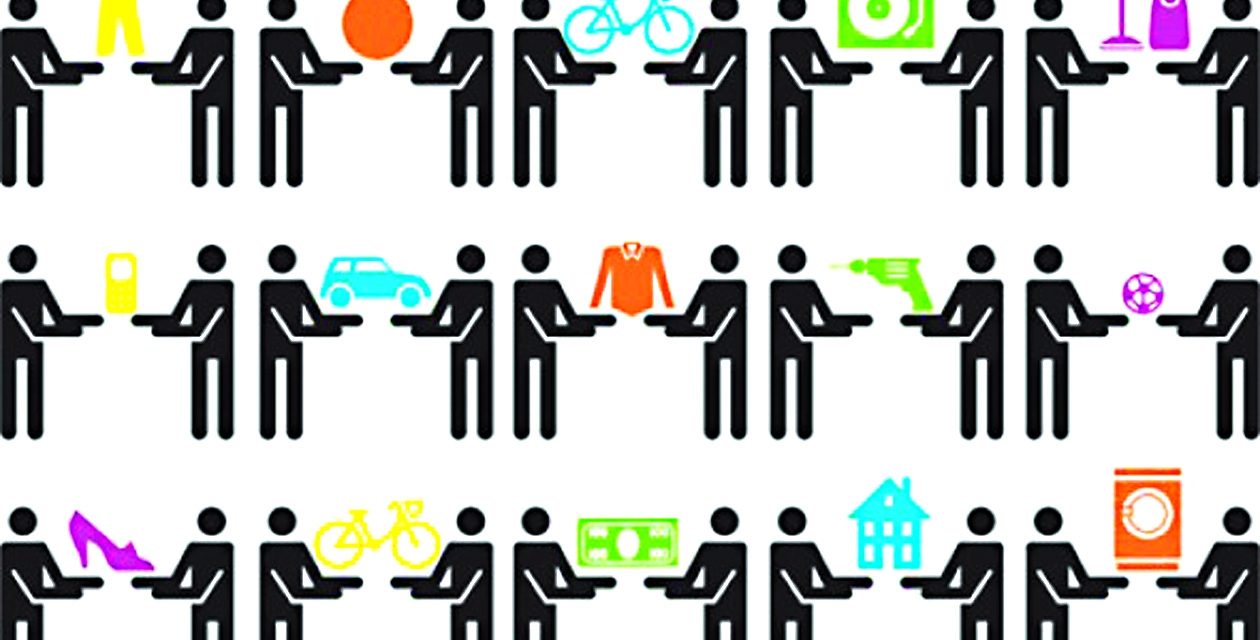When most of us hear “sharing” in the context of the environment, we think of the sharing economy: ridesharing, apartment/home lending, peer-to-peer lending, reselling, co-working, or talent-sharing. Many popular platforms such as Airbnb, Uber, ZipCar, and Craigslist offer opportunities to use underutilized assets that would otherwise remain idle or share existing assets with others. To the extent that these options substitute for new purchases, are more efficient than existing options, and do not crowd-out more environmentally friendly options they can certainly promote environmental sustainability. The problem is that identifying and quantifying just how environmentally-friendly these platforms are can be difficult.
The most prevalent form of sharing – one that has been generating resource and energy savings for hundreds of years – often receives less attention. Families. Or more generally: multi-person households. By living together, household members can share their expenditures (and the resulting energy use and emissions) with other household members. This is especially true for goods that are relatively shareable (non-rival), where one person’s consumption does not preclude an other’s, like heating, cooling, and most uses of electricity. Heating, lighting, and television viewing, for instance, can be shared simultaneously by sitting in the same room. Small appliances can be shared successively by using the same computer, hair dryer, or toaster. Other goods and services are more rival (less shareable), like food, water for bathing, and haircuts but some opportunities for sharing may still exist.
The sharing economy, then, can be thought of as a household on a massive scale. Sharing economy platforms are attempting to provide the social infrastructure necessary to get cities to behave more like families, at least when it comes to sharing. In some respects, cities already do this, and have done so for a long time. Cities and multi-person households have always had something in common – they reduce the space between people. Those with loud roommates or nosy neighbors can attest to this. By bringing people closer together, cities allow members of different households to share some of the costs (and emissions) of residential energy with others via shared walls. Similarly, the more dense urban environment reduces distance to employment and commerce while providing public alternatives to private transportation. These opportunities for sharing are why cities are more environmentally-friendly than suburban or rural areas.
So what gives? If cities are already good at this, why do we need the sharing economy?
Since the mid-twentieth century, two changes have been shaping the cultural landscape in the United States: urbanization and falling household size. In 1960, the average American household had 3.3 people and only 13% of households had only one person; by 2010 household size had fallen nearly 30% to 2.6 and the prevalence of one-person households had doubled, to 27%. By delaying and/or forgoing marriage and childbirth and having fewer children, people are missing out on opportunities to share with other household members. These lost opportunities, all else equal, put upward pressure on energy use and emissions.
Since cities also facilitate sharing, can urbanization offset the lost sharing opportunities in households? In a recent publication my co-authors and I found that yes, they can, and do, just not as much as we need them to. At least not yet. Since 1960, urbanization has reduced per capita carbon dioxide emissions by 3%, all else equal, but falling household size has pushed them up 9%. In other words, urbanization has offset only some impacts of falling household size. In the U.S. urbanization since mid-century has often come in the form of suburbanization and sprawl, not the type of urban density that facilitates sharing and reduces environmental impacts. Cities only do this when the technological and social infrastructure provided makes it so, like dense affordable housing, connected street grids, mixed-use zoning, and public transportation, to name only a few. In this way, we can see that urbanization is not a panacea, nor is the sharing economy. If Uber rides replace subway rides or Airbnb stays in large homes replace those at more efficient hotels, it will be like suburbanization and sprawl all over again. However, since these platforms thrive in dense areas that are digitally connected, cities can have an important role in shaping the environmental impact of the sharing economy.
Around 200 million Americans live in cities, accounting for nearly two-thirds of the population, according to the U.S. Census Bureau. To make our cities more sustainable, and leverage the potential environmental benefits of the sharing economy, we need only look to households. After all, households have been sharing for hundreds, if not thousands, of years. What has made that possible? Technological progress and social capital. We tend to focus on the former, but the latter may be the key to truly sustainable cities.

